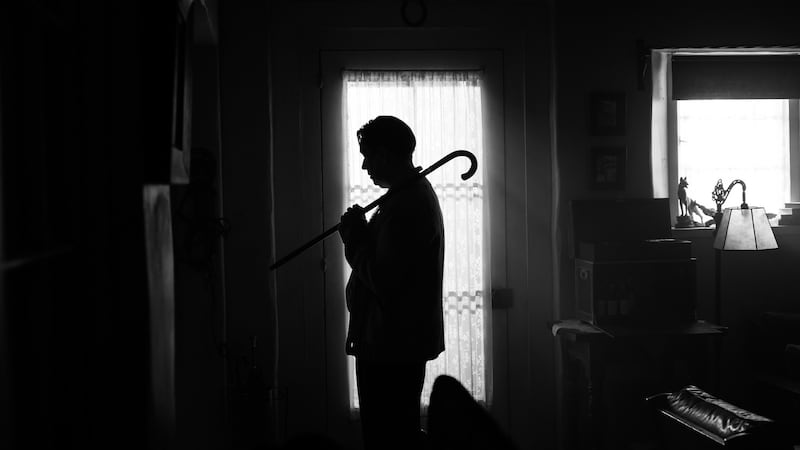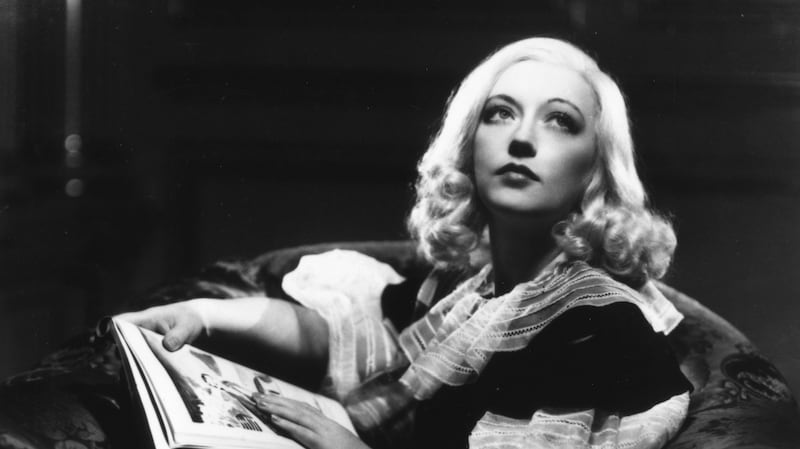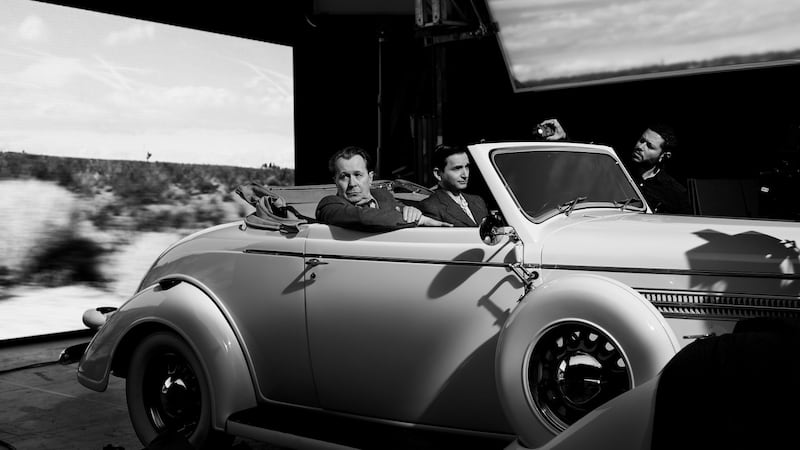History has not been kind to Marion Davies. The biggest female movie star of the early 1920s, she was crowned Queen of the Screen by theatre owners in a 1924 ceremony alongside the equivalent King: the number one male box office star, Rudolph Valentino.
Davies was the 13th movie star in history to make an imprint of her hands and feet in the cement outside of Grauman's Chinese Theatre. She had enough range to attract rave reviews for dozens of slapstick turns, for the artful celebrity impersonations she did in King Vidor's The Patsy (1923), and for the lavish Tudor blockbuster When Knighthood was in Flower (1922). She was billed above Clark Gable in Polly of the Circus, above Gary Cooper in Operator 13 (1934), and above Bing Crosby in Going Hollywood (1933).
She successfully transitioned to the sound era despite having a stutter: she even worked that speech impediment into her 1933 performance as a poor Irish lass who stands to inherit a fortune in Peg O’ My Heart.
For some decades, however, Davies has endured – if at all – as the inspiration for Susan Alexander, the vapid, talentless mistress of the media mogul at the centre of Citizen Kane (1941), a fictionalised version of Davies' relationship with the tyrannical tycoon William Randolph Hearst. In fact, younger generations are just as likely to be acquainted with her as a parody of that parody; Susan Alexander, in turn, served as the inspiration for Miss Springfield, the dim-witted extramarital squeeze of the Kennedy-alike Mayor Quimby in The Simpsons.
Davies' relationship with Hearst has been dramatised many times. Virginia Madsen played her opposite Robert Mitchum in the 1985 ABC telefilm The Hearst and Davies Affair. Davies was essayed by Heather McNair in Chaplin (1992) and Gretchen Mol in Cradle Will Rock (1999). Director Peter Bogdanovich cast Kirsten Dunst in the role in 2001's The Cat's Meow.
Few of these depictions have been flattering. Having conducted extensive research into Davies, Virginia Madsen expressed regret for her part in a project that was marketed as “the scandalous love affair between one of the richest and most powerful men in America and the obscure Ziegfeld girl he promoted to stardom”.

People just connect Marion to the William Randolph <br/> Hearst relationship. And that's unfortunate because <br/> she was misunderstood and that relationship was misunderstood as well
Mank, David Fincher's new film chronicling the making of Citizen Kane, goes some way to restoring Marion Davies' reputation. Mank is Herman J Mankiewicz, the prolific, hard-drinking screenwriter who contributed to such Golden Age classics as Duck Soup, The Wizard of Oz and Citizen Kane. Mankiewicz, who is played by Gary Oldman in Fincher's film, shared the Oscar for screenplay with Citizen Kane's director and star, Orson Welles. But the authorship of the film has long been a bone of contention among film scholars.
Critic Pauline Kael, writing in her contested 1971 takedown of Welles, Raising Kane, maintained that Mankiewicz, not Welles, was the film's true auteur. That hypothesis has been subsequently challenged in writings and testimonies from Welles himself, Andrew Sarris, Dorothy Comingore (who played Susan Alexander Kane), Joseph McBride, Peter Bogdanovich, Jonathan Rosenbaum, Bernard Herrmann, and Welles' secretary, Kathryn Trosper.
Marvelling at Kael’s now discredited account, Trosper asked: “Then I’d like to know, what was all that stuff I was always typing for Mr Welles?”
It's Kael's line, however, that is taken by Mank's screenwriter, Jack Fincher, the late journalist and editor of Life magazine and the father of director David Fincher.
Fincher’s new film explores Mankiewicz’s ties to William Randolph Hearst (Charles Dance) and Marion Davies (Amanda Seyfried), and depicts both of those figures with rather more sympathy than previous screen representations.
“People just connect Marion to the William Randolph Hearst relationship,” says Seyfried. “And that’s unfortunate because she was misunderstood and that relationship was misunderstood as well. I’ve come to learn that they were really well connected. Their bond was really unique. He was an older man when he went after her and she was so young. But they were good for each other. They brought out things from each other. And there was a loyalty that was really heartbreaking and beautiful. She took care of him until the end. I love that we get to show that in this movie.”
That may be the case. But there are plenty of details about Davies and her affair with Hearst that lend themselves to that “scandalous love affair between one of the richest and most powerful men in America and the obscure Ziegfeld girl he promoted to stardom” narrative.
Charlie Chaplin’s second wife, Lita Grey, quoted Davies as saying: “God, I’d give everything I have to marry that silly old man. Not for the money and security – he’s given me more than I’ll ever need. Not because he’s such a cozy companion, either…No, you know what he gives me, sugar? He gives me the feeling I’m worth something to him.”

She was the precious treasure of his heart for more than 30 years, until his last breath of life
Marion Cecilia Elizabeth Brooklyn Douras was born in 1897 in Brooklyn. When Marion was a child, her father, Bernard J Douras, a lawyer, and her housewife mother, Rose Reilly, changed the family name to the British-sounding Davies after they read it on a real estate billboard. As a teenager, Davies dropped out of convent school to pursue a career as a chorus girl and fashion model.
In 1916, Davies was signed to the Ziegfeld Follies theatrical revue, where she met Hearst, then a 53-year-old newspaper mogul. He immediately took charge of Davies' career, founding Cosmopolitan Pictures, a production company that existed primarily to promote Davies. She appeared in 29 silent and 17 talkies with the company. She was relentlessly plugged across Heart's publications. "Marion never looked lovelier" became a catchphrase for Hearst's celebrated gossip columnist, Louella Parsons.
Throughout their 30-year affair, a relationship that was considered “the worst kept secret in Hollywood”, their lifestyle was absurdly lavish. Hearst purchased the Cameo Theatre in San Francisco in 1929, renamed it the Marion Davies Theatre and erected giant neon letters to that effect, so that he might see Davies’ name from his office.
When Davies cooed over photographs of St Donat's Castle in Country Life magazine, the Welsh Vale of Glamorgan property was snapped up by Hearst and given to her as a gift in 1925. When George Bernard Shaw visited the castle he remarked that: "This is what God would have built if he had had the money."
Across the Atlantic, the couple spent much of their time entertaining at their Beverly Hills estate, where frequent guests included Charlie Chaplin, Douglas Fairbanks, and John F Kennedy.

That glamour was tainted by various troubling incidents. Charlie Chaplin, who stepped into a lion’s cage in a dress as Davies’ body double for Zander the Great, was suspected to be the intended target in the mysterious death of producer Thomas Ince aboard Hearst’s yacht in 1924. Rumours held that Hearst had shot Ince in a jealous rage after mistaking him for Charlie Chaplin, until the coroner made the unlikely ruling that the producer had died from acute indigestion (despite multiple witnesses and a contemporaneous Los Angeles Times headline that read, “Movie Producer Shot on Hearst Yacht”).
Hearst was unquestionably ruthless. In Mank, in common with his Citizen Kane alter-ego, Hearst – who is often credited with starting the Spanish-American War with a series of provocative, nativist articles – is heard to say: "You provide the pictures, we'll provide the war." He was equally cut throat when it came to Davies' career. When MGM executive Irving Thalberg cast his own wife, Norma Shearer, instead of Davies in the title role in Marie Antoinette, Hearst pulled his newspapers' support for MGM and moved Cosmopolitan Pictures distribution from MGM to Warner Brothers.
It was Gore Vidal who put forward the theory that Kane's infamous "Rosebud" was a reference to Hearst's pet name for Davies "tender button". And that this annoyed Hearst most of all.
Either way, Citizen Kane infuriated him. He ordered his papers never to mention the film and to discredit Welles. He banned any reviews or advertising for the film across his media conglomerate. He promised to launch an anti-Semitic campaign against the (mostly Jewish) studio heads, a threat that spooked Louis B Mayer into organising a consortium of studio heads to buy the negative of Citizen Kane from RKO with the intention of destroying it. He used his influence with J Edgar Hoover to have Welles investigated by the FBI.
Davies, meanwhile, claimed she never saw the film, nor was she bothered by it. She would remain with Hearst until his death in 1951. Eleven weeks and one day after Hearst’s death, she married Horace Brown in Las Vegas. He was, by his own account, an abusive husband and she filed for divorce on several occasions before her death, from stomach cancer, in 1961.
In the foreword to her 1975 memoir, Orson Welles wrote: “Marion Davies was one of the most delightfully accomplished comediennes in the whole history of the screen…she would have been a star if Hearst had never happened.
“The mistress was never one of Hearst’s possessions,” he added. “He was always their suitor, and she was the precious treasure of his heart for more than 30 years, until his last breath of life.”
Amanda Seyfried is inclined to agree: "When I read the script for Mank, I felt like I really wanted to know this person. So I went back and watched all the movies I could find of her. She was so sharp. She was phenomenally talented. This is such a good chance to make her come to life in a different way. Hopefully a lot of people see this and see her completely differently."
Mank is on Netflix from December 4th












